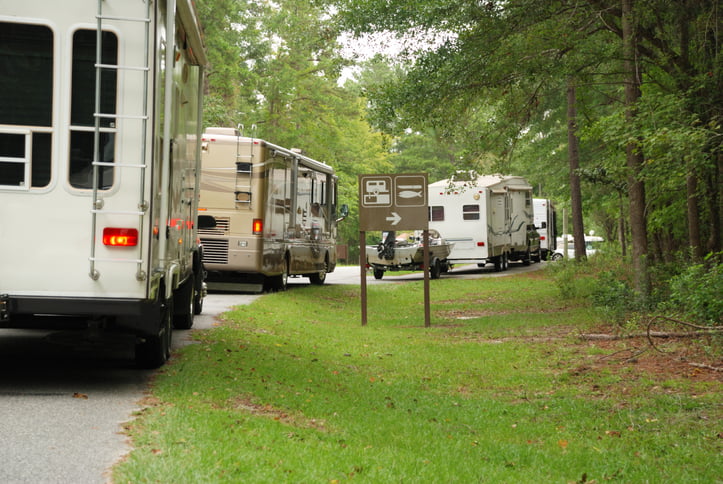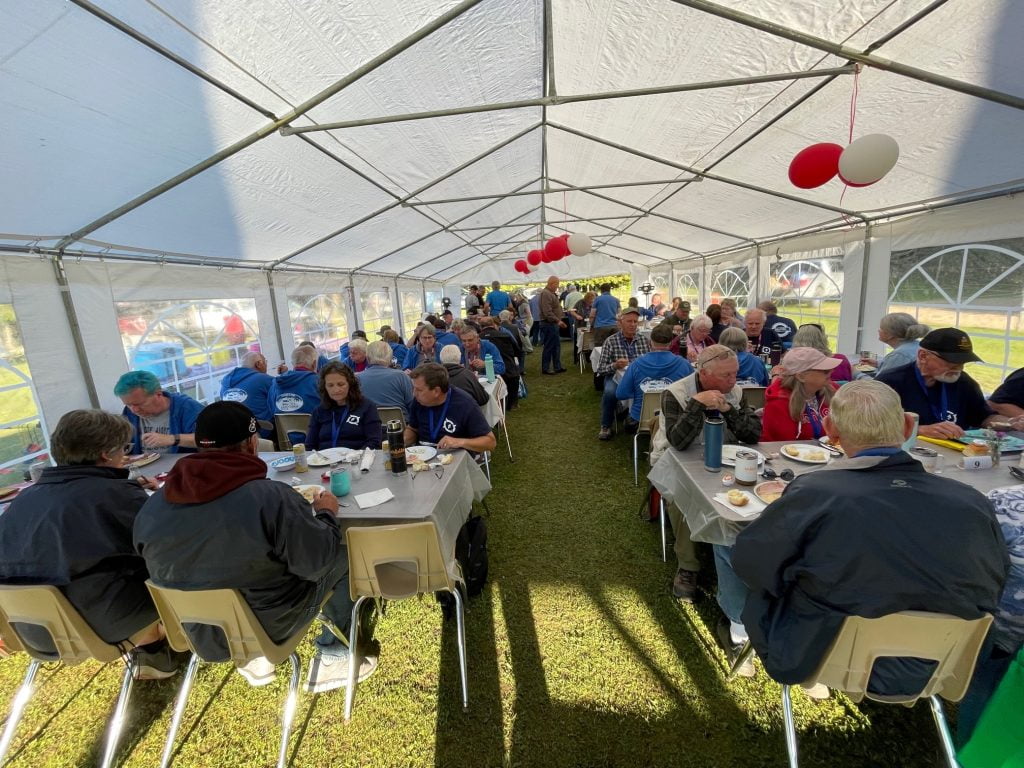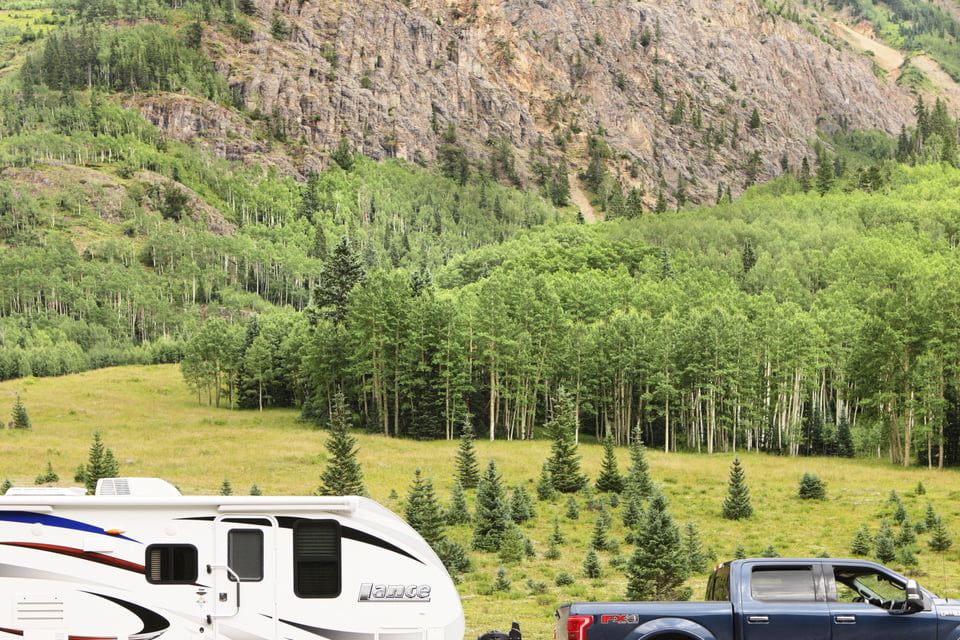In 1971, I was a student naturalist in Turkey Point Provincial Park. One holiday Saturday morning, a family arrived at the park office, which also served as the campground office, at about 10 o’clock. The father came into the office looking tired and haggard. He asked if we had a campsite available. When we said yes, he erupted in joy. He told us that he and his family had left Toronto after the children finished school on Friday evening, the day before. They drove north to Georgian Bay looking for a campsite, with no luck. Then they drove south along Lake Huron, stopping at every park along the way looking for a campsite. Then, starting on the west end of Lake Erie, they visited every park; all without finding an open site. After about 16 hours of driving, they arrived at Turkey Point to finally find a site open.
This was the unacceptable, but quite common situation for Ontario campers before pre-registration systems. It was first-come, first-serve at the park gate. The situation I witnessed at Turkey Point was all too common an occurrence, with campers driving for many hours only to find out at arrival there were no campsites available.
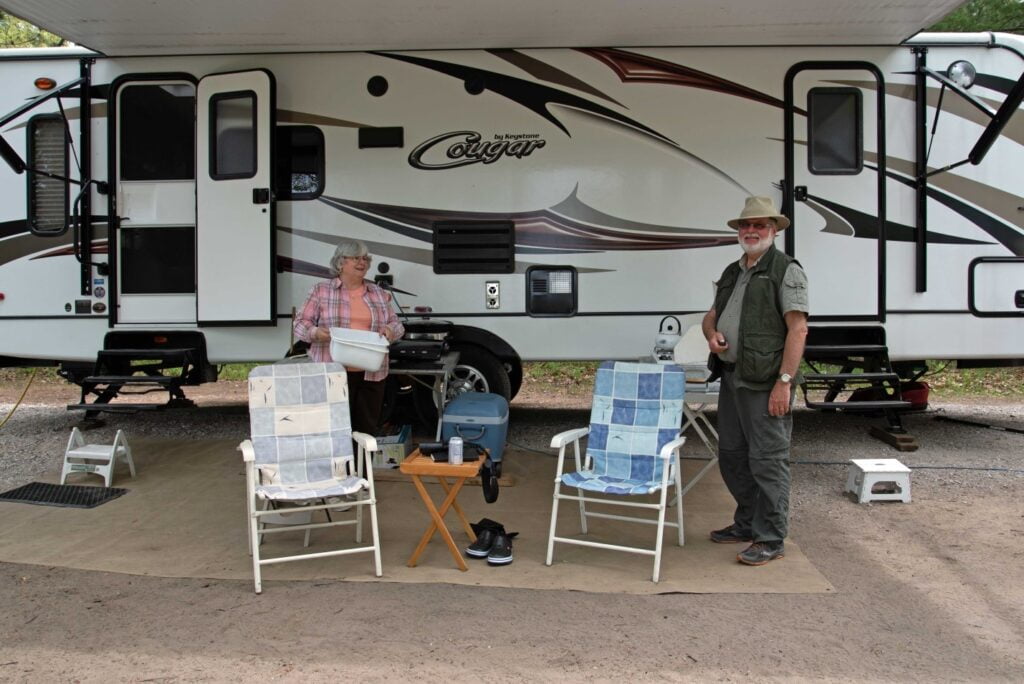
Figure 1: Paul and Cathy Eagles in front of their 6th generation trailer in a provincial park. The author is a retired professor of park management and environmental planning at the University of Waterloo. He has been an RV camper for over 40 years (Figure 1), and currently has his 6th generation of recreational trailer. He learned to back up a trailer on the family farm at age 10.
A Moral ‘Code’ is Created
The problem was recognized by Ontario Provincial Parks. In 1978 a pilot system of mail-in registrations was piloted in 12 parks. This mail-in system was expanded to the entire system in 1981, with 39,939 registrations the first year. By 1998 there were 217,155 mail-in registrations at the park level, a level which overwhelmed the capacity of some park’s offices. In 1999 the first centralized telephone registration system was introduced. On April 1, 1999 when it was opened millions of attempted telephone calls swamping the call center for days. This large initial volume starkly revealed the pent-up demand for prebooking of camping vacations. In 2000 the ability to book using the internet was introduced, and by 2005 the internet booking exceeded the telephone call in booking. It is now 96% internet booking.
The initial Ontario Provincial Parks campsite registration system was very advanced for its time. It enabled clients to interact directly with the campsite inventory, a unique advance. Over time, bookings for yurts and cabins were added to the system as well. Even the park interior sites could be booked, in order to facilitate movement through the parks’ back country. Now interacting with inventory is common with online purchasing.
The managers experimented with the advance timing of booking. They settled on 5 months ahead of the time of arrival, as it was decided to be the fairest booking timeline for most clients.
Working the ‘System’
The current system provides extensive information to the camper, with important information on the characteristics of each campsite; such as a photograph, the type of equipment allowed, the capacity of the site, the size of the site, any restrictions and whether it has electricity.
However, this advanced system is weak for RV owners and users. Given the shortage of pull-through sites, important information is missing on the ease of backing into the sites. Which way to drive down the campsite road? The backing angles? Any obstacles to be aware of? I find the only way to be sure is to walk the campground and scout out all issues before driving into the campground roads. I have seen too many damaged RVs due to a lack of scouting.
Virtually all the campgrounds were developed over 50 years ago, and were not designed for RV use. Many problems exist, such as overhanging branches, tight corner turns, potholes on the access roads, and excessively tight campsite movement. Additionally, only 40% of campsites have electrical connections. Ontario Parks state that 1,600 sites are pull-through, 8% of the total inventory, and designed for RVs.
In my experience, the campground operators often do not take the needs of RVs fully into account in campground and campsite management. This is a key issue that needs addressing.
The water and sewage dumping stations are a major source of complaint. They are too few and many are badly designed. Typically, those who come to pick up water in their RV block the access of those of who are there to dump their tanks, and vice versa. The lineups can be hours long. These facilities badly need to be expanded and upgraded.
The Ontario registration system was a major advance for campers, offering many unique benefits with first-come first-serve on the computer replacing the first-come first-serve at the park gate of earlier times. This booking system was then copied by Conservation Authorities and Provincial Park systems across Canada, although it is interesting to note that the national parks system was very late in adopting this approach.
The booking system is run by an outside company under contract to Ontario Parks. The costs for operation are absorbed by the camper at a nominal fee of about $11 per registration. Interestingly the consumer pays for the campsite vacation at the time of booking; giving Ontario Parks valuable funds that can be used for management in preparation of the visit.
The booking and registration system is of major importance to the campsite managers, as they know in advance the level of use upcoming. This enables them to employ appropriate levels of staff and provide suitable levels of service.
Evolution Over Time – Change is in ‘Site’
In 2020 and 2021, the demand for camping in Ontario Provincial Parks reached record levels, as interprovincial and international travel was restricted due to the Covid-19 pandemic. In 2020, parks saw record use for camping even with being closed for April, May and most of June, and the highest number of reservations ever processed, at more than 700,000.
Recently, there was much criticism of the registration system, which in my opinion, was misplaced. For example, on March 1, 2021 at 7 AM the system had 10,000 unique users, using 15,000 devices (computers, smartphones, tablets) trying to book for the August 1 holiday weekend. March 1st is a unique situation such that one can reserve for arrival dates on July 29, 30, 31, and August 1; there were only 4,300 sites available for these four days. This gives an idea of the capacity problem; using the demand (10,000 users) and supply figures (4,300 campsites), one can estimate that Ontario Provincial Parks need another 5,000 campsites.
As of May 23 2021, there were 441,678 reservations processed, with 96% by internet. This shows both the scale and the success of the existing registration system in helping Ontario citizens plan their camping vacations.
The current problem is one of demand exceeding supply, not any inherent design problem in the registration system itself.
However, decades after launch, the system is now showing its age; largely because of what it does not contain. It does not contain crucial components found in other competing tourism systems, such as those of resorts and cruise ships. For example, cruise ship clients can book activities and shore excursions at the time of cruise booking, up to over a year in advance. For our upcoming Caribbean Cruise in 2022 I booked a bird watching tour in Trinidad a year in advance.
In Ontario Parks, the on-site activities and their availability are not provided at the time of campsite booking: trip planning is compromised by this lack of prior knowledge.
Ontario Provincial Parks often have environmental education programs available to campers (Figure 2), but these are not available for prebooking in the registration system. In fact, the campers are not informed of these programs until they arrive at the park and happen to look on bulletin boards, if they do so at all.
Many parks have equipment rentals, from canoes to bicycles, but none of these are available for prebooking on the Ontario Parks system (Figure 3). Special programs are offered by the Parks, such as indigenous events or bird watching festivals, but none of these are available for prebooking. Similarly, many parks have food stores and a few have restaurants, but their products aren’t visible on the park internet site or available for pre-purchase. The system is antiquated in not providing access to the full range of programs and services their clients want during their visit. This is a major business opportunity for Ontario Parks; one that would be appreciated by all campers, and would give a hefty boost to the efficacy of Park tourism and economic return.
The 2020 Ontario Budget announced $6 million to electrify more campsites, and expand the number of roofed accommodations over the next 4 years. The goal is have 50% of campsites electrified.
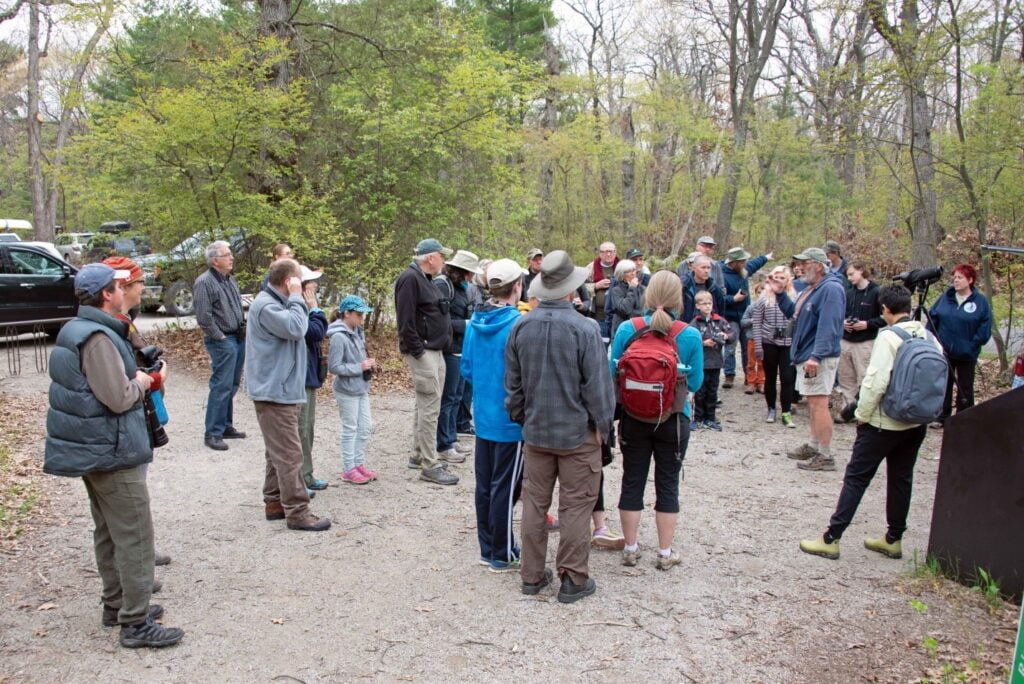
Figure 2: Guided Birding Hike at Pinery Provincial Park.
Camping 2.0 – The Next Generation
The needs of the RV community need to be better accommodated, with new, thoughtfully-designed campgrounds, and accessibility in the physical, driving sense. Better information is needed for operators of RVs on how to enter and exit the campsites safely for themselves and their surroundings.
On the whole, the Ontario Provincial Parks campsite registration system is efficient, effective, and a highly useful tool for the potential camper. However, the level of information and booking possibilities for the range of services and products needed by the camper during their stay is much too limited. This hinders user accessibility and planning. It needs to be expanded to include all amenities available to keep up with tourism industry standards for registration to ensure a positive customer experience. Let us hope that the government considers in future budgets an upgraded registration system to include prebooking of education programs, equipment rentals, and food sales.
Do you have thoughts, comments or suggestions about your experience camping at Ontario Parks that you would like to share to help bring this issue to attention of ON Parks? Send your comments to [email protected] or send us a message or comment on our Facebook page!
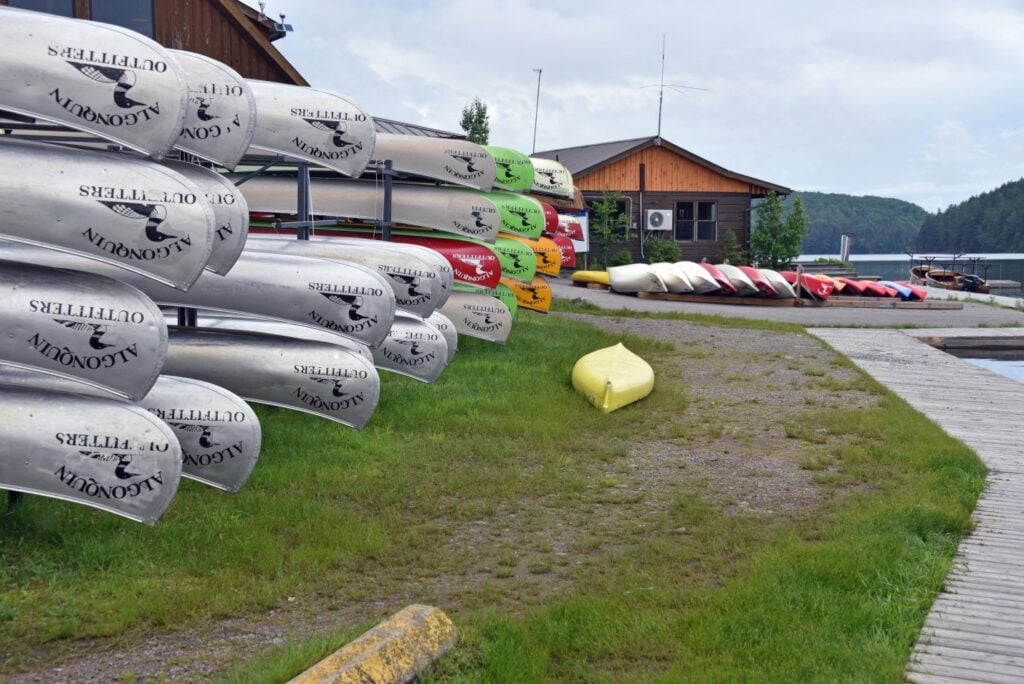
Figure 3: Canoes ready for rent at the Opeongo Outfitters in Algonquin Provincial Park.
Acknowledgements
Mr. Bruce van Staalduinen, a retired senior manager for Ontario Parks, provided valuable information on the history of the registration system. Megan Birrell, marketing intern for Ontario Parks, provided answers to questions on campsite supply and plans for Ontario Parks.

